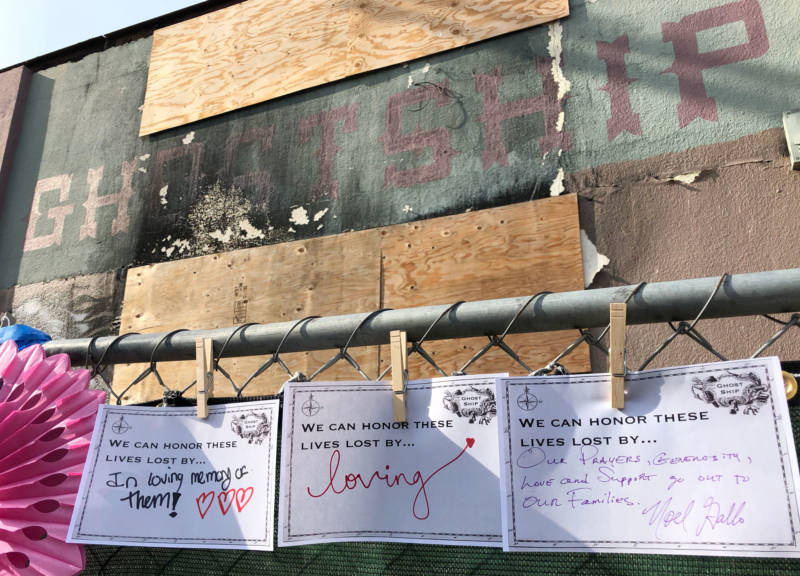Mozdean, who was a captain with the Fire Department on the night of the Dec. 2, 2016 blaze that killed one resident and 35 concertgoers, tearfully testified that she had thought about the Department's response “a million times” and said she “couldn’t have done anything differently” or “done anything better.”
“I couldn’t have done anything to change the outcome,” she said, following a question from defense attorney Curtis Briggs regarding video footage from a firefighter's helmet-worn camera shown in court. “It’s been really hard for me.”
Prosecutors say the two defendants charged with 36 counts of involuntary manslaughter each — master tenant Derick Almena and Max Harris, who has been described as a creative director or second-in-command — illegally converted the warehouse known as the Ghost Ship into a residential art space and stuffed it from floor to ceiling with flammable building components, art and other materials and didn't install proper safety measures like fire alarms, sprinklers and well-lit exits.
Mozdean testified that her Station 13 engine crew, which is located within a block of the Ghost Ship, was on the scene even before final dispatch orders were completed.
She described seeing thick gray smoke pushing out through windows with high “volume” and “velocity,” indicating a “significant fire.”
Mozdean said that as she entered the front door of the building behind another crew member, the smoke had reached to the floor and indicated to her that the fire was “not survivable.”
“This is bad. It made the hair on my neck stand up,” she said, following questions from Alameda County Assistant District Attorney Casey Bates.
Mozdean testified that she did not hear or see fire alarms, nor saw any indication of a sprinkler system.
She said she and her crew advanced about 40 to 50 feet into the building and laid down the first fire hose to put water on the blaze.
The prosecution played for the jury helmet-camera footage from another firefighter Mozdean followed into the warehouse that showed mostly black footage with occasional illumination from body-worn LED lights. At one point a glow indicated a fire in the rear of the structure.
Mozdean said she and another crew member began leaving the building after about 39 minutes because one or both of their breathing apparatus alarms had sounded. As they left the building, following the path of the hose they had put down, the fire, which had started in the rear of the building, “ignited overhead and blew out through the front windows.”
Mozdean said after exiting she told the battalion chief that fire crews on the scene should consider a change of strategy.
“None of us want to leave a burning building,” Mozdean said. “It’s not in our culture to admit there is no chance.”
Defense attorney Curtis Briggs asked Mozdean if she believed there were any people still inside the warehouse at the time they had arrived at the blaze. She said that regardless of whether there was one or 36 in the building, they needed to get in quickly.
Defense attorney Tony Serra, who represents Almena, questioned why Mozdean hadn’t asked people gathered outside the warehouse if there were still people inside before she entered the building. He also asked why her fire crew hadn't put up ladders to the second floor to try to rescue people trapped there.
Mozdean said interrogating people outside the warehouse would be a waste of time and that her actions were deliberate: The intent was to get in quickly to look for victims. She said she didn't have indication people were in the building.
In other testimony Wednesday, Oakland Police Officer Jonathan Low testified about body-camera footage he recorded on Jan. 31, 2015. In one video, Low asked Almena if he stayed at the Ghost Ship warehouse, to which Almena replied, “I don’t live here.”
